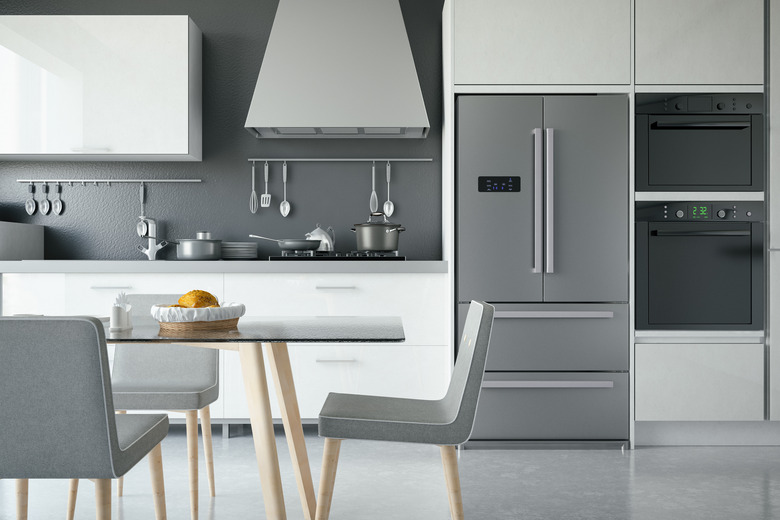What Is The Purpose Of The Water Tray Under A Refrigerator?
The refrigerator drip pan or water tray is installed underneath a refrigerator to catch condensation from the fridge's interior as the appliance goes through its normal operating cycles. This tray normally requires little upkeep on your behalf, but you may sometimes encounter repair and maintenance issues that involve you having to clean and possibly remove the tray.
Tip
The water tray under your refrigerator is intended to catch drips that form during the normal operation of the fridge's defrost cycle.
Purpose of the Tray
Purpose of the Tray
The appliance's water tray is also commonly called the drain pan, in reference to the job that it actually does: It collects the water that flows out of the refrigerator, draining through a tube. This water originates because of the condensation that results from the refrigerator's natural defrost cycle, which prevents too much ice from building up inside the unit. The water flows down the back interior wall of the appliance, goes through a drain on the refrigerator's floor and drips down into the water tray. The tray also collects any water that drips off the condenser coils on the lower back section of the refrigerator.
Where the Water Goes
Where the Water Goes
In normal operation, although you know the water tray is located underneath the refrigerator and you can hear the normal refrigerator noises as it shifts through its cycles, you never need to empty the tray. This is because, ordinarily the collected water evaporates into the air. The warmth generated by the compressor motor and the coils on the back rear or underside the refrigerator provide a useful several degrees of heat, helping the water evaporate. Since hot air rises, this creates a mild convection current which wafts the warm, moist air from beneath the fridge and draws in drier air from the room.
Troubleshooting a Leak
Troubleshooting a Leak
If you notice water pooling around the bottom of the refrigerator, the water tray may be overfilled, or it may have a leak. Pull the appliance away from the wall. If you do not see a water tray, you probably need to remove an access panel on the bottom back of the refrigerator to reach the tray. Make sure the tray is not simply out of position and allowing dripping water to fall around it. Reposition it if that turns out to be the case. If the tray itself is leaking, replace it.
It's also helpful to check whether the drain tube at the back of the freezer is obstructed, which can interfere with the normal defrost cycle. Other potential sources of excess water in your train include a fridge that's not fully level, or — if the fridge is plumbed — problems with the water supply lines.
Cleaning the Water Tray
Cleaning the Water Tray
The water tray should be cleaned, especially if you ever notice mold growth in it. To do this, simply pull the tray out from the rear of the refrigerator, and empty any water out of it. Wash the tray by hand in the kitchen sink, using soapy water. Dry off the tray and slide it back into its slot underneath the refrigerator. In addition to the tray, also clean the coils on the back of the refrigerator. Install a crevice tool attachment on a vacuum cleaner, and use it to suck up the lint and debris that may be covering the coils.
Some fridges may not be designed to provide consumer access to the drop tray at all. For those models, cleaning or repairing the tray may require a degree of actual disassembly and reassembly. If you're not confident in your ability to do this, it's best to call a professional.
